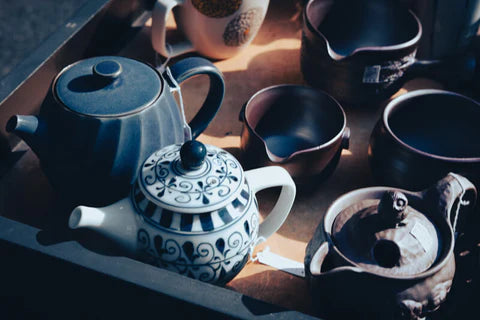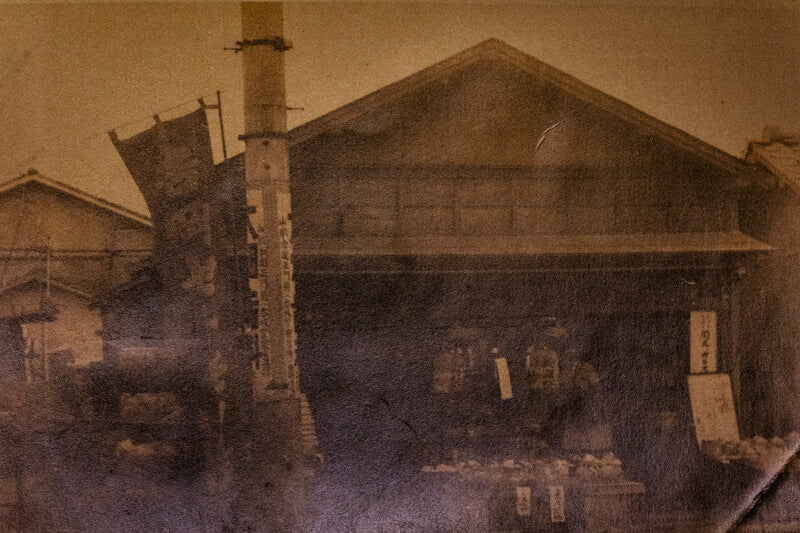
Have you ever stared at an artisanal bowl in wonder, tempted to make the purchase but unsure if you can keep it in its gleaming, shopfront state? Or do you have a favorite teapot in your kitchen, one that has accompanied you through dozens of drafty winter evenings, and now it’s showing some worrying cracks? In this guide, join Kyomi on an exploration of the finest craftsmanship as we address common concerns about caring for Japanese tableware, particularly ceramics and porcelain. Here, we draw on the expertise of Mr. Yoshioka, one of the owners of Tokodo, a family-run emporium of traditional ceramics and porcelain. Whether you're just curious about porcelain or seeking to enhance your connection with your collection, we’re happy to lead you through the questions that arise when these silent wonders become part of our lives.

The Basics: Understanding and Maintaining Your Tableware
Q: What is the difference between ceramic and porcelain?
A: Ceramic and porcelain are both made from clay, but their different characteristics mean that different treatment is required. Using fine-grained white clay known as kaolin, porcelain is fired at a higher temperature of around 1400℃ (2552℉) and has a smooth, non-permeable surface. They’re durable, have greater breakage resistance, and you don’t have to worry about staining them. On the other hand, ceramics are fired at a lower temperature of around 1300℃ (2372℉) and contain tiny holes, making them water-absorbent and susceptible to odor and mold. Ceramics come in a variety of colorful glazes and designs, but they chip easier and need a little extra care.
Q: Can you put ceramic and porcelain items in the dishwasher or microwave?
A: It depends on the design of the product. Most ceramic and porcelain products are microwave-friendly, but if gold or silver is used in the design, refrain from putting them in the microwave as they will spark. If you have a dishwasher, the water pressure will cause any thin items inside to shake, so pack the tableware securely so they don’t move about and chip against each other.
Q: How do water type and humidity affect ceramic, porcelain, and lacquerware items, especially when handling Japanese tableware abroad?
A: Hard water may affect ceramics in the production stage, but water type would not cause problems with finished products (for those living in the UK, rest assured that the limescale will not affect them). However, lacquerware in particular needs to be stored in a more humid environment, and Mr. Yoshioka recommends keeping them in an environment that has water nearby.
Q: Why are there brown cracks/stains on my ceramics?
A: This is likely due to liquid penetration. As moisture seeps through the microscopic cracks in the glaze, it combines with whatever residue is left on the item’s surface (tea, coffee, food, etc), forming “craze lines” under the glaze. If left unattended, it will turn brown. If greasy food is left on the ceramic surface for an extended period of time, the oil will also soak into the item and form a stain. Please refrain from using bleach or heat to get the stains out — it may damage the ceramic and, in the case of heat, cause the stain to spread.
This process inspired the phenomenon of Kan-nyuu (貫入), translated literally into “piercing in” or “crackling pattern”. Often seen in Japanese ceramics, it is an intentional decorative effect featuring a thin web of cracks on the surface of the product. In the firing process, Kan-nyuu is achieved by combining glaze and clay with different rates of shrinkage in the product, causing fissures to appear during the cooling process. Like snowflakes, no two Kan-nyuu pattens are the same. As their colour deepens into brown with frequent usage, this pattern is cherished in Japanese culture as a hallmark of a unique and well-loved item.
Repair and Appreciation of Damaged Ceramics
Q: I’ve just gotten some ceramic products from Japan, but they don’t seem to come with instructions for the problems I’m facing. Why is this so?
A: When it comes to Japanese products, care instructions are often omitted by manufacturers and wholesalers because there is an implicit understanding that certain instructions are self-explanatory. As Mr Yoshioka puts it: "I don't have to tell you, but you'll understand.” An instruction manual is sometimes included in the box, but it is usually provided by the wholesaler or trading company, not the manufacturer.
In his interview, Mr. Yoshioka mentioned that the most common occurrence of this was with the kyusu, a traditional Japanese teapot with a side handle meant for brewing green tea, specifically sencha. “Do you see that there is a little rubber on the end of the kyusu?” he pointed out. “People will ask for new replacements now and then. But they don't need it, and unless I ask them to throw it away when they get home, they leave it on till there is still a tea stain on it. It’s actually just a cover to prevent the tip from tearing.”
Q: What is Kintsugi and how is it used for repairing ceramics?
A: Kintsugi (金継ぎ) or "golden joinery" is the traditional Japanese technique of mending broken pottery with lacquer dusted with gold. Providing a means to preserve their functionality while embracing newfound beauty, its philosophy treats the process of breakage and repair as a significant part of the object’s history, accepting the changes and flaws that come with it. While a product mended by Kintsugi is no longer food safe and should only be used for decoration, Mr. Yoshioka believes that the technique should be cherished as a hallmark of the Japanese sense of beauty. While Mr Yoshioka’s brother, the co-owner of the Tokodo, can perform this technique, a Kintsugi specialist is called into the foray in cases where they receive a severely damaged piece. “Kintsugi is quite popular now,” added Mr Yoshioka. “You can do it yourself at places like Hands (a home center chain store). It's pretty easy to do, so I would recommend trying it out.”
Ultimately, the care of your tableware transcends mere cleaning — it's a process of cherishing the memories woven into each piece, about nurturing your well-being through these subtle acts of preservation. As these items grace our daily lives, let their routine care become a reverent ritual, ensuring that they continue to narrate their rich tales for generations to come.




